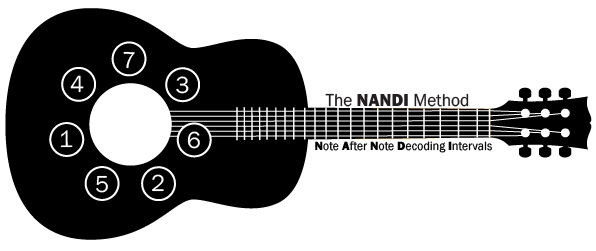All major scales have a partner known as the relative minor scale. Both of these scales share all of the same notes, as well as the same number of sharps and flats within their key signatures.
We can use a major scale to derive a relative minor scale by simply moving up a major sixth or counting down three half-steps from the root of the major scale.
Let’s say that we didn’t know that the relative minor scale of C Major was A minor. All we would need to do is count down three half-steps from the root note of the C Major scale, which is C.
The Major scale degrees are:
1-2-3-4-5-6-7
The Minor scale degrees are:
1-2-♭3-4-5-♭6-♭7
If we order the notes of the C Major scale in fourths, we get:
B-E-A-D-G-C-F
If we take the notes of the A minor scale, which are A-B-C-D-E-F-G, and order them in perfect fourths, the sequence looks exactly the same as the C Major scale ordered in fourths.
B-E-A-D-G-C-F
Essentially, because the same natural notes that are in the C Major scale exist in the A minor scale, the same pattern arises in fourth degrees. The only difference between the two scales is the scale degrees.
If we look at the table below, we can see the notes and intervals on both of the scales, ordered in fourths:

Now take a look at the diagrams below. You can see how the major and relative minor scales have all of the same notes in the same order, yet they have different intervals. The sixth degree of the major scale corresponds to the root or 1 of the minor scale.


